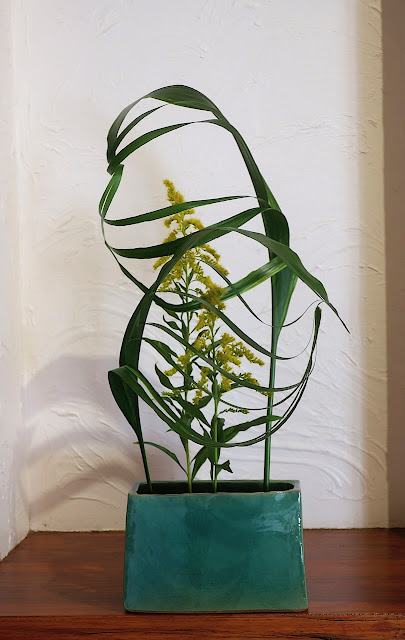While visiting friends in Angelesea recently, I was delighted to be able to take this photo of a male Gang Gang Cockatoo at quite close range. It is one of the endearing characteristics of these cockatoos that they are relative unperturbed by humans being close and scrutinising them.
It was feeding on the seeds of an Australian native plant Melaleuca nesophila which is endemic to an area near Albany on the southern coast of Western Australia. This plant is a popular garden shrub because of its abundant purple globular flowers. Sadly many of them on this particular bush have been burnt by the recent three consecutive days of high temperatures and hot dry winds.
* * * * *
At a recent class with my Geelong students...
... Maree had the exercise of "Taking into account the view from above". Obviously, this is the converse exercise of "Taking into account the view from below" which I posted a photo of last week. In this case Maree placed the materials in two black suibans, a long narrow trough and a more standard rectangular suiban. This photo was taken from directly above the ikebana which was placed on the floor. The abstract-looking geometric design was quite striking from this angle.
The senior students were given the exercise of making an ikebana using large leaves with a floral focus.
My ikebana this week uses the flower inflorescence of two stems of Goldenrod Solidago canadensis. My intention was to make the Goldenrod the principle element of the ikebana. I then added two Aspidistra elatior leaves. When I first placed the leaves they seemed to dominate the Goldenrod so I partially split them so that they hung in graceful curves. This created a better harmony of forms between the materials. Unfortunately the glowing yellow of the flowers becomes a little washed out in the photograph because of the dominance of green, including the Japanese ikebana vessel.
Greetings from Christopher
24th March 2024

.jpeg)
.jpeg)
.jpeg)
.jpeg)
.jpeg)
.jpeg)

No comments:
Post a Comment